The Oulujoki watercourse hydropower plants are cultural-historical treasures

Pekka Elomaa / Council of Oulu Region
The hydropower plants in the Oulu and Kainuu regions and their adjacent residential areas were among the most outstanding undertakings of Finland’s post-war reconstruction. The Council of Oulu Region’s three-year project inventoried and documented the cultural heritage of hydropower. A selection of this exceptional hydropower plant architecture is featured on Archinfo Finland’s webservice Finnish Architecture Navigator.
The banks of River Oulujoki water system are lined with unique architectural gems and valuable cultural heritage. How Finland, a small country devastated by the ravages of the war, was able to carry out such enormous construction projects in the 1940s and 1950s and to build hydropower plants that represented the cutting edge of modern architecture and technology is nothing short of a miracle.

During and especially after the Second World War, sixteen hydropower plants complete with the surrounding residential areas were erected along the Oulujoki water system – including the Oulujoki, Hyrynsalmi and Sotkamo waterways. Some of the magnificent hydropower plants have been included in Docomomo Finland’s list of important architectural and environmental sites, and the future goal is for the hydropower plants to be included among the UNESCO World Heritage Sites.
The Oulujoki water system hydropower plants and their surrounding industrial communities were researched and documented as part of the Cultural Heritage of Hydropower Architecture (Veku Vaku) project, a three-year project led by the Council of Oulu Region and co-financed by the EU Interreg Nord programme. One of the goals of the project was to highlight the cultural-historical significance of hydropower construction and its tangible and intangible legacy. In addition to hydropower plants and their surrounding communities, the project involved the old creek mills in Kainuu, which have been listed as nationally significant built cultural environments (RKY sites).
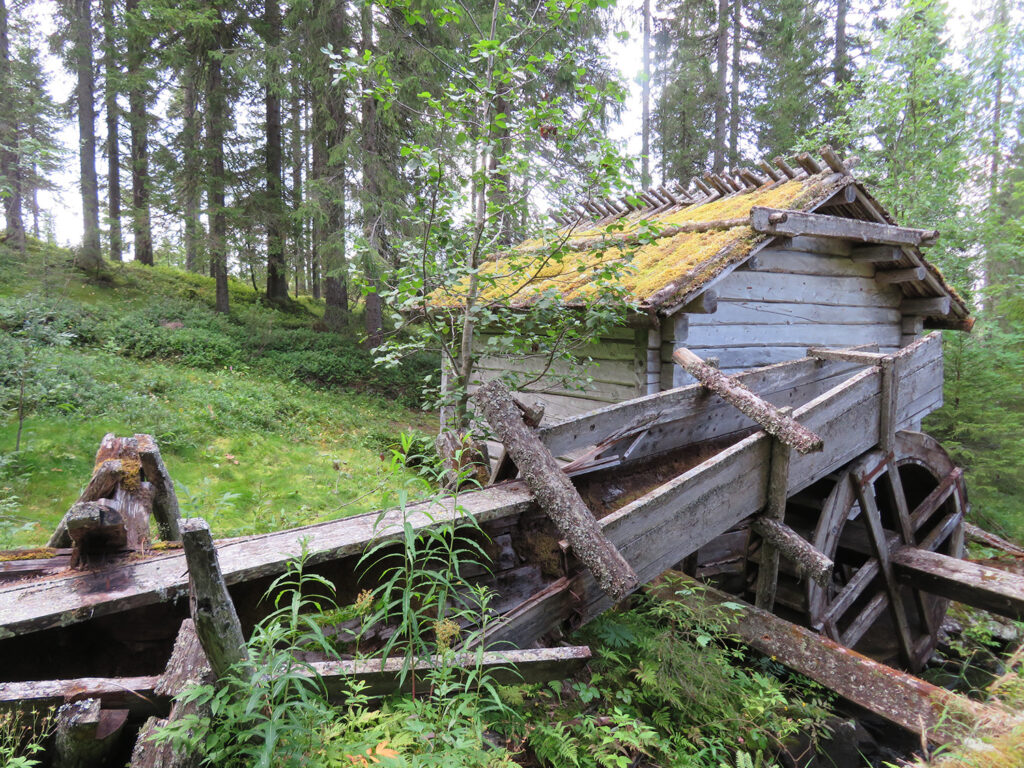
“Of the hundreds of small mills that used to operate in Kainuu, the sixteen creek mills that have been preserved illustrate how the power of the rivers was utilised in the sparsely populated forestland. The large-scale hydropower plants built in the reconstruction era, on the other hand, are still in use and produce energy for the electricity grid. The sites we documented for the project were often completely opposite in scale but are based on the same source of energy: the power of flowing water,” says Kirsti Reskalenko, Regional Land Use Planning Architect for the Council of Oulu Region.
An exploration of majestic hydropower plant architecture
The most notable constructors of the hydropower plants were the energy companies Oulujoki Osakeyhtiö and Kajaani Osakeyhtiö. The architect contracted by Oulujoki Oy was Aarne Ervi, who is believed to have been recommended for the task by Alvar Aalto, while the Kajaani Oy hydropower plants were designed by Eino Pitkänen, known for his many designs in Kajaani. The Merikoski hydropower plant was built at the western end of the Oulujoki river by the City of Oulu. The power plant was designed by Bertel Strömmer, who had lost the urban planning competition for the area to Alvar Aalto but whose hydropower plant design was considered better.
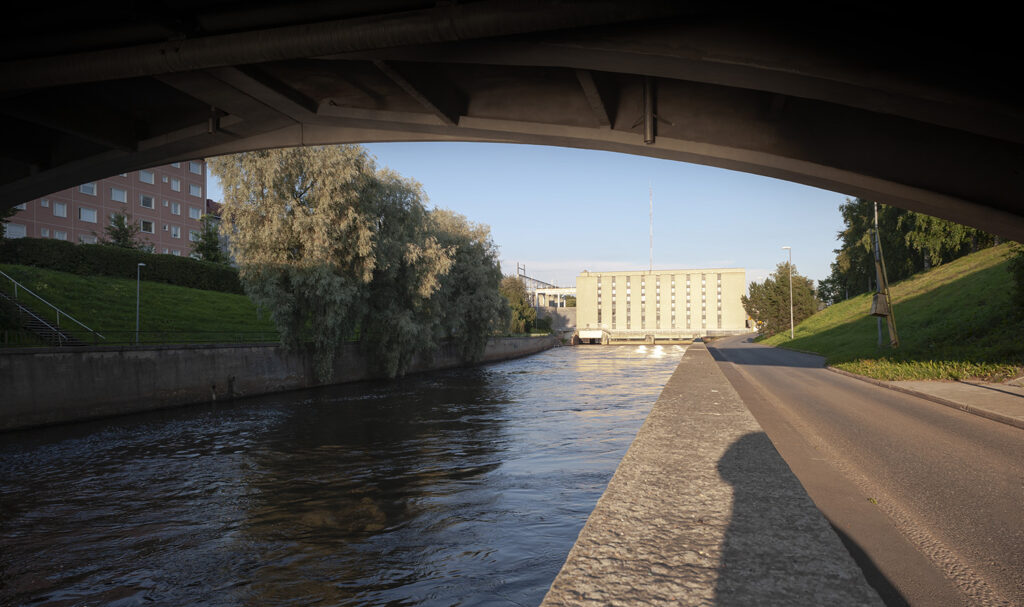
The architecture of the hydropower plants has made a powerful impression on architect Pekka Elomaa, the project manager for the Veku Vaku project. He particularly admires the clarity and atmosphere of Ervi’s architecture, which is a sum of the harmonious interplay of the use of space, light, materials and even the smallest of details.
“How the buildings are positioned in the landscape is spectacular. The architecture is clearly defined, purely functional. Each detail is carefully planned for a reason, and the standard of building work is simply exquisite. These buildings superbly showcased the latest achievements in technology,” Elomaa says.
Elomaa visited each hydropower plant site to photograph them and was given access to the interiors, machine rooms and turbine halls, which are usually closed to the public.
“An added element in photographing these sites is the formidable power of the water. It makes the entire building vibrate, making the use of a tripod impossible. Spatially, Ervi’s hydropower plants are breath-taking. Ervi’s use of natural light in the interiors is ingenious – and the colours!” Elomaa enthuses.

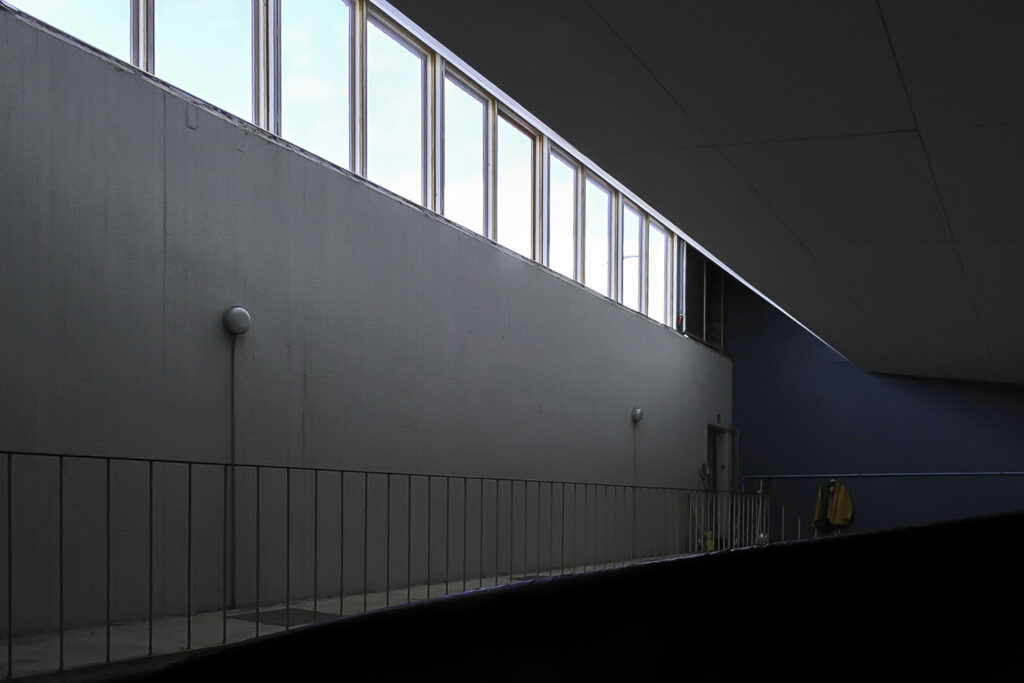
The photographs taken by Elomaa can be viewed on the Finnish Architecture Navigator, a portal maintained by Archinfo Finland, where the valuable materials produced by the Veku Vaku project will be permanently stored. The Cultural Heritage of Hydropower selection can be accessed through this link (opens in a new tab).
Giant projects that paved Finland’s journey to being a modern industrialised country
The series of hydropower plants built along the Oulujoki river water system was one of the most high-profile construction projects in Finland during the post-war reconstruction. Their construction was prompted by the need to generate capital to pay off war reparations, as well as the optimism of the reconstruction era and Finland’s ambition to transform itself into a modern industrial country. The hydropower building sites were testing grounds for new concrete technologies and serial production methods. For example, the Pyhäkoski plant building site included a concrete research laboratory.
Building a hydropower plant was a complex process, which required massive preparatory works such as building railways through the wilderness for the transport of materials, damming the river for the duration of the works and installation of cable lines across the river.

The construction and maintenance of the hydropower plants was highly labour-intensive, and the workers and the management needed housing. To attract skilled labour and staff to the remote areas, the housing built by the hydropower companies came with the latest modern comforts such as refrigerators and indoor toilets, which were then still exclusive luxuries. The services and amenities included schools, doctor’s surgeries, cinemas, club houses and guest houses. The residential areas evolved into established tight-knit communities, well looked after by the hydropower company.
Helena Hirviniemi, Chief Intendant for the Finnish Heritage Agency, has described the hydropower plant communities designed by Aarne Ervi in the Docomomo catalogue as follows:
“The construction of hydropower plants along the Oulujoki river provided Ervi with a concrete opportunity to test and apply architectural ideas at all levels, ranging from regional planning to the smallest building details. On the one hand, the layout of the power plant communities followed the modernist urban planning ideologies of low density, adapting to the surrounding nature and terrain, and the early industrial communities based on the hierarchical structuring of the area on the other. The architecture of the buildings supports the town planning ideas. The power plants and their surrounding service buildings are simple and monumental, whereas the residential areas form a lush park-like environment.”
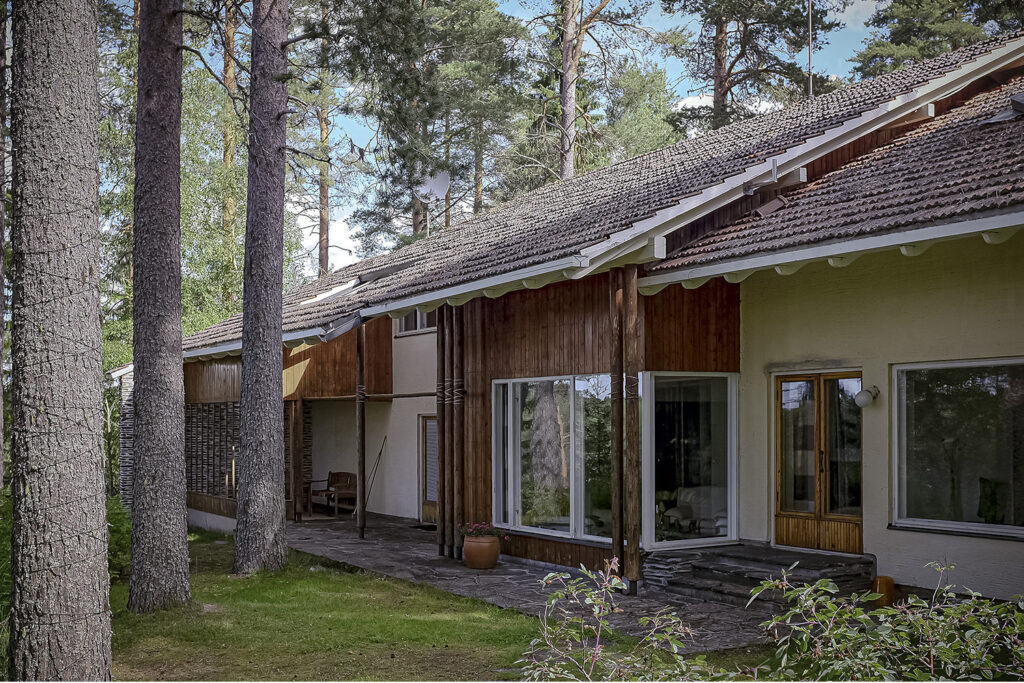
Samuli Paitsola, building researcher for the Council of Oulu Region, has inventoried the hydropower plant residential areas. In his view, the housing developments represent the height of the Finnish residential reconstruction architecture. “In his designs for the residential buildings, Ervi married the methods of modern architecture, his unique understanding of spatiality and the possibilities offered by new technology. Ervi also incorporated references to the local architectural traditions in his designs,” Paitsola says.
“I would pay particular attention to the rich and innovative use of wood and natural stone, brick roofing and light-coloured rendered surfaces. It all comes together in Ervi’s humane and intuitive approach to architecture,” Paitsola says, adding,
“The residential communities were deliberately situated in stunning locations such as on riverbanks or amid pine forests so that the surrounding nature could form a harmonious dialogue with the architecture. It is also noteworthy that some of the buildings are based on a standardised design with serially produced elements and fixtures.
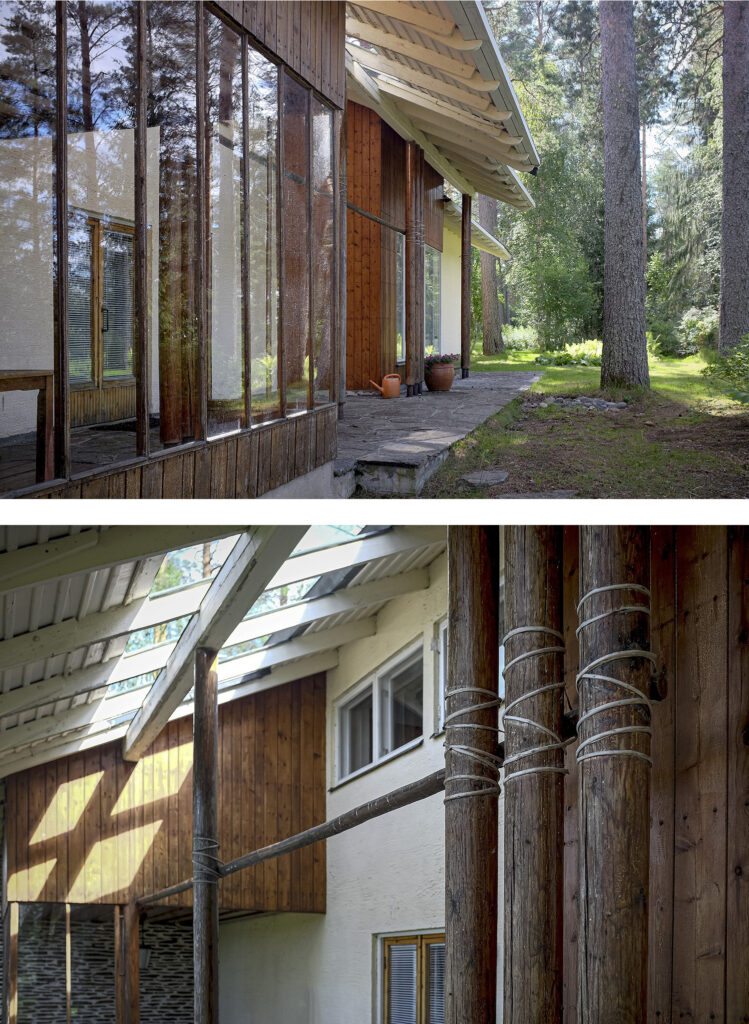
The Finnish Architecture Navigator introduces Ervi’s designs for the Leppiniemi residential area adjacent to the Pyhäkoski hydropower plant in Muhos and the Nuojua and Jylhämä communities in Vaala. A question well worth considering is whether Ervi’s most renowned residential area, the Tapiola garden city in Espoo, would have turned out as it did had Ervi not first designed the hydropower communities in Oulu region.
Monumental architecture that came at a price
The decision to harness the River Oulujoki water system for hydropower arose from the necessity to put Finland back on her feet after the war. However, the decision had consequences for the region’s traditional industries: the river was also the source of livelihood of many tar rowers, salmon fishers, log drivers and boatmen transporting tourists. The building of the hydro-plants also had other negative impacts.
It was understood that the building of hydropower plants would transform the landscape, and the emphasis was therefore to create new aesthetic values by contracting the best architects of the day. However, the impact of the harnessing of rivers on the environment was dramatic. Päivi Tervonen, a building heritage specialist, is a great admirer of the architecture and quality of construction of the hydro-plants, but she also feels ambivalent and even emotional about the subject.
“The price that nature paid for such magnificent architecture was extreme. The entire landscape was altered for ever: the thunderous rumbling of the rapids, which had created the soundscape and rhythm for the lives of so many people for centuries, was suddenly silenced never to return,” Tervonen says.
The change in the mental landscape of the locals that followed was enormous and even traumatising. “This aspect of the development was never really discussed until the 1990s, when a series of discussion events on the issue was organised,” Tervonen explains. One of the goals of the Veku Vaku project was to gather stories and memories related to hydropower. Stories were gathered through local community events, and the public were also encouraged to share their stories on the project website. Read more about the stories on the Veku Vaku project website through this link (opens in a new tab).

The hydropower plants built by Oulujoki Oy are currently owned by Fortum, and the plants built by Kajaani Oy by Kainuun Voima and UPM Energy.
For Pekka Elomaa, the Veku Vaku project was a fitting end to a long career: finalising the materials for the project continued a few months after his official retirement. So why was the cultural heritage project on hydropower plants so inspiring for Pekka that he was ready to postpone his retirement?
“These plants are like hidden treasures that I had the privilege to discover. But the best thing has been sharing information about these treasures – and hopefully helping others discover them, too.”
The Cultural Heritage of Hydropower on the Finnish Architecture Navigator
Aarne Ervi on the Finnish Architecture Navigator
Eino Pitkänen on the Finnish Architecture Navigator
Veku Vaku project website


